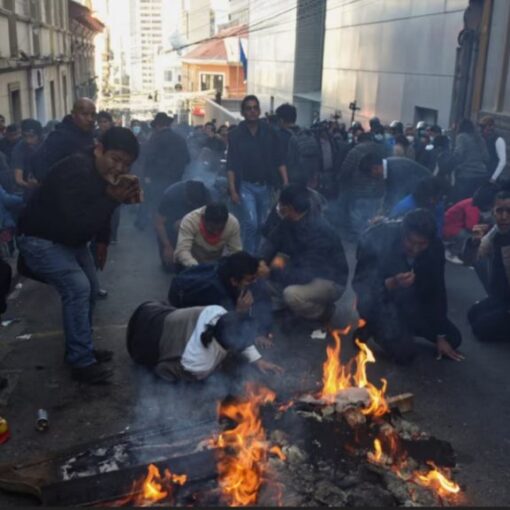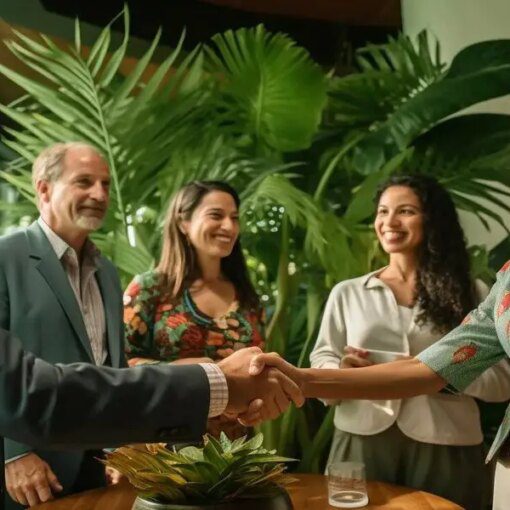QCOSTARICA -San José is a city of surprises. Two of my favorite surprises can be found in one fascinating, historic building in Downtown San José. That building is called the Steinvorth Building, an early 20th century warehouse located just a half block north of Avenida Central.
Two of the businesses I enjoy in this building are Café La Mancha, and The Costa Rican House of Chocolate. They are both worth a visit. Let’s look at each of these businesses
Café La Mancha
– Advertisement –
Café La Mancha is a coffee shop for the gourmet coffee purist. It is quickly becoming a “must-visit” location for serious coffee drinkers in Costa Rica. This is where you can enjoy a “third wave” coffee experience. You may be asking; what is a “third wave” coffee experience?

If you are my age, you remember when your parents drank pre-ground coffee that they bought in big cans at their local grocery store. There was no thought about where the coffee was grown, when it was roasted, or what its characteristics were. That was considered the “first wave” of coffee.
The “second wave” was introduced in the U.S. by retail coffee chains like Starbucks and Peets. In those stores you could buy whole-bean coffee that came from countries like Kenya, Indonesia, Colombia, and of course Costa Rica.
The “third wave” coffee experience refers to high quality coffee that comes from an individual grower. In other words, the coffee you are drinking comes from a single coffee farm . . . a farm that enjoys a very high reputation.
Alberto Font, the owner of Café La Mancha, personally travels to the regions of Costa Rica that are known for producing the highest quality coffee beans. He meets with the coffee growers, samples their products, and determines who provides the very best coffee. He purchases small batches of coffee beans from those growers who he judges produce exceptional, top quality, specialty coffee.

Alberto brings the raw coffee beans back to San José where he roasts them in his own facility. Café La Mancha then freshly grinds and individually brews each cup of coffee for its patrons.
– Advertisement –
Café La Mancha offers customers a variety of choices on how their cup of coffee is to be brewed. Among the options are the Kalita Brew, the V-60, the Chemex drip, and more. I have to admit, all of this is new to me. If you are a novice at gourmet coffee brewing techniques like I am, just ask your barista which technique he or she recommends. You won’t be disappointed.

As I explored what Café La Mancha had to offer, Alberto introduced me to some coffee drinks that I had not tried before. The first is cold brew coffee. To make this, they coarsely grind coffee beans, add room-temperature water to the beans and let it steep for 22 hours. It creates a smooth, velvety coffee.
The second drink is called “Cáscara.” The word means “skin” or “peel,” and it refers to the skin of the coffee berry. Café La Mancha takes the dried coffee skins, they brew it like a tea, then they serve it cold. It produces a rich, fruity drink; some people say that it creates flavors like cherries or raisins.

Café La Mancha also has a small restaurant next to the coffee shop. It offers sandwiches, croissants, salads and a variety of pastries. Their chocolate-banana bread gets rave reviews.
– Advertisement –
Café La Mancha is open from 9 a.m. to 6:30 p.m. Tuesday through Saturday. Closed on Sunday and Monday.
The Costa Rican House of Chocolate
If you are a faithful reader of this website, you may remember a few years back, I posted a story about The Costa Rican House of Chocolate (La Casa del Cacao de Costa Rica). At that time, it was a business located on Calle 11. Like many small businesses, it closed during the covid pandemic.

Now it has been reborn. It is in a new location in the historic Steinvorth warehouse building, and I have to say, it is better than ever. It is a wonderful combination of an artisanal chocolate factory, a retail shop, a small restaurant . . . and a chocolate workshop. That’s right, a chocolate workshop.
Most people know that Costa Rica grows some of the best coffee in the world. But it comes as a surprise to many, that this beautiful little country is also one of the world’s leading sources of fine, gourmet-quality chocolate. In fact, some exclusive chocolate makers in the U.S. consider Costa Rica to be the Napa Valley of chocolate.
The House of Chocolate was created by Cedric Begein, an immigrant from Belgium. “I grew up loving chocolate.” Cedric recently told us. That love of chocolate drew him to Costa Rica. Shortly after arriving, he opened this innovative business.
As you enter the Steinvorth building you will walk by the ornate steel pillars holding up the glass ceiling. You will pass the open area with tables and chairs, and as you get close to the House of Chocolate, you will smell the rich, glorious aroma of chocolate being made.

In the shop you may think you have arrived in chocolate heaven. There are plain chocolate bars, chocolate balls, chocolate squares, chocolate birds and turtles, chocolate bars decorated with dried fruits and nuts, and sometimes they even have chocolate cellphones!
Behind the counter you can glimpse the area where the chocolate is being made. Cedric tells us that he gets all of his cacao beans from an organic farm near Cahuita on the Caribbean Coast. The beans are cleaned, pressed and ground into a powder. From there, it is processed into delicious chocolate candies.
Next to the shop is a small restaurant similar to a Costa Rican soda. It offers some Tico dishes, as well as sandwiches, salads, and crepes. There is also a big variety of amazing desserts and drinks made with . . . you guessed it; chocolate!
If that wasn’t enough, you can attend the chocolate workshop. Cedric teaches this fun and informative class in English, Spanish or French. You will learn some history of cacao, and the differences between creating artisanal and commercial chocolate. The best part is that Cedric will show you how to grind the cacao beans, and he will guide you through each step to turn it into a delicious chocolate bar. You can then add dried fruits, nuts, and sprinkles to create the chocolate bar of your dreams.

When you leave the workshop, you will have a chocolate bar that you made yourself. The class takes about one-and-a-half hours, and costs $30 a person. If you are interested in taking the chocolate class, call 8777-2326 in advance. The class can accommodate 2 to 10 people.
If you want more information, check out their website: https://casadelcacao.net/accueil-english/ The Costa Rican House of Chocolate is open from 9 a.m. to 6 p.m., Monday through Saturday. Closed on Sundays.
The Steinvorth Building
Both of these innovative businesses are located in the Steinvorth Building. This fascinating building is what remains of a much larger warehouse that was built in 1907. And even though it originally served as a commercial warehouse, it was considered an architectural gem.

The portion of the Steinvorth Building that remains today has a brick facade decorated with stone flowers. Inside, you will immediately be impressed by the ornate steel stanchions that look like something out of New Orleans. And above that, is an arched glass ceiling.
On the ground floor are the two businesses; Café La Mancha and The Costa Rican House of Chocolate. There is also an open common area with tables and chairs, and a stage at the south end where live music is performed. There is a second level that houses several other businesses including a bar that specializes in craft beers.
The building itself is worth a visit. The Steinvorth Building is located on Calle 1, between Avenida Central and Avenida 1.

Michael Miller is the author of the unique first-person guidebook that focuses on Downtown San José, titled: San Jose, Costa Rica, A stroll through the “heart and soul” of Costa Rica’s capital city. Copies are available at Amazon (both Kindle and in paperback). To link to Michael Miller’s Amazon Author Page, click here: tinyurl.com/8s8smmsy
If you are in San José, paperback copies are available directly from the author. Michael Miller also conducts walking tours of Downtown San Jose, with an emphasis on Costa Rica’s history and culture. These tours are conducted for the renowned tour guide, Nury Mora, and her tour company, “The Real San Jose.” You can contact them at: TheRealSanJose@gmail.com
– Advertisement –
Source link
Michael Miller



